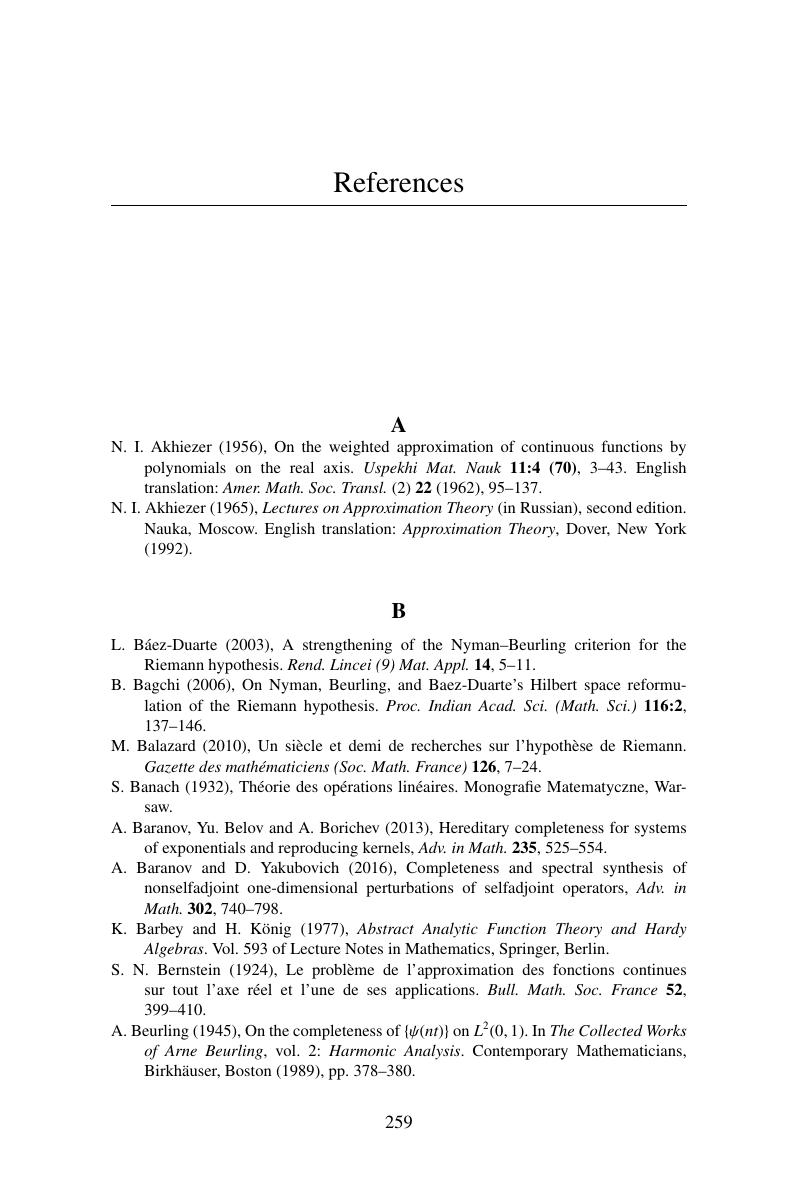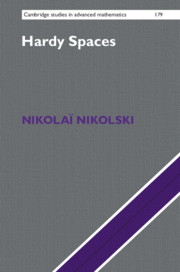Book contents
- Frontmatter
- Dedication
- Contents
- Preface
- Acknowledgements
- Biographies
- Figures
- The Origins of the Subject
- 1 The space H2(T): An Archetypal Invariant Subspace
- 2 The Hp(D) Classes: Canonical Factorization and First Applications
- 3 The Smirnov Class D and the Maximum Principle
- 4 An Introduction to Weighted Fourier Analysis
- 5 Harmonic Analysis and Stationary Filtering
- 6 The Riemann Hypothesis, Dilations, and H2 in the Hilbert Multi-disk
- Appendix A Key Notions of Integration
- Appendix B Key Notions of Complex Analysis
- Appendix C Key Notions of Hilbert Spaces
- Appendix D Key Notions of Banach spaces
- Appendix E Key Notions of Linear Operators
- References
- Notation
- Index
- References
References
Published online by Cambridge University Press: 25 January 2019
- Frontmatter
- Dedication
- Contents
- Preface
- Acknowledgements
- Biographies
- Figures
- The Origins of the Subject
- 1 The space H2(T): An Archetypal Invariant Subspace
- 2 The Hp(D) Classes: Canonical Factorization and First Applications
- 3 The Smirnov Class D and the Maximum Principle
- 4 An Introduction to Weighted Fourier Analysis
- 5 Harmonic Analysis and Stationary Filtering
- 6 The Riemann Hypothesis, Dilations, and H2 in the Hilbert Multi-disk
- Appendix A Key Notions of Integration
- Appendix B Key Notions of Complex Analysis
- Appendix C Key Notions of Hilbert Spaces
- Appendix D Key Notions of Banach spaces
- Appendix E Key Notions of Linear Operators
- References
- Notation
- Index
- References
Summary

- Type
- Chapter
- Information
- Hardy Spaces , pp. 259 - 267Publisher: Cambridge University PressPrint publication year: 2019

